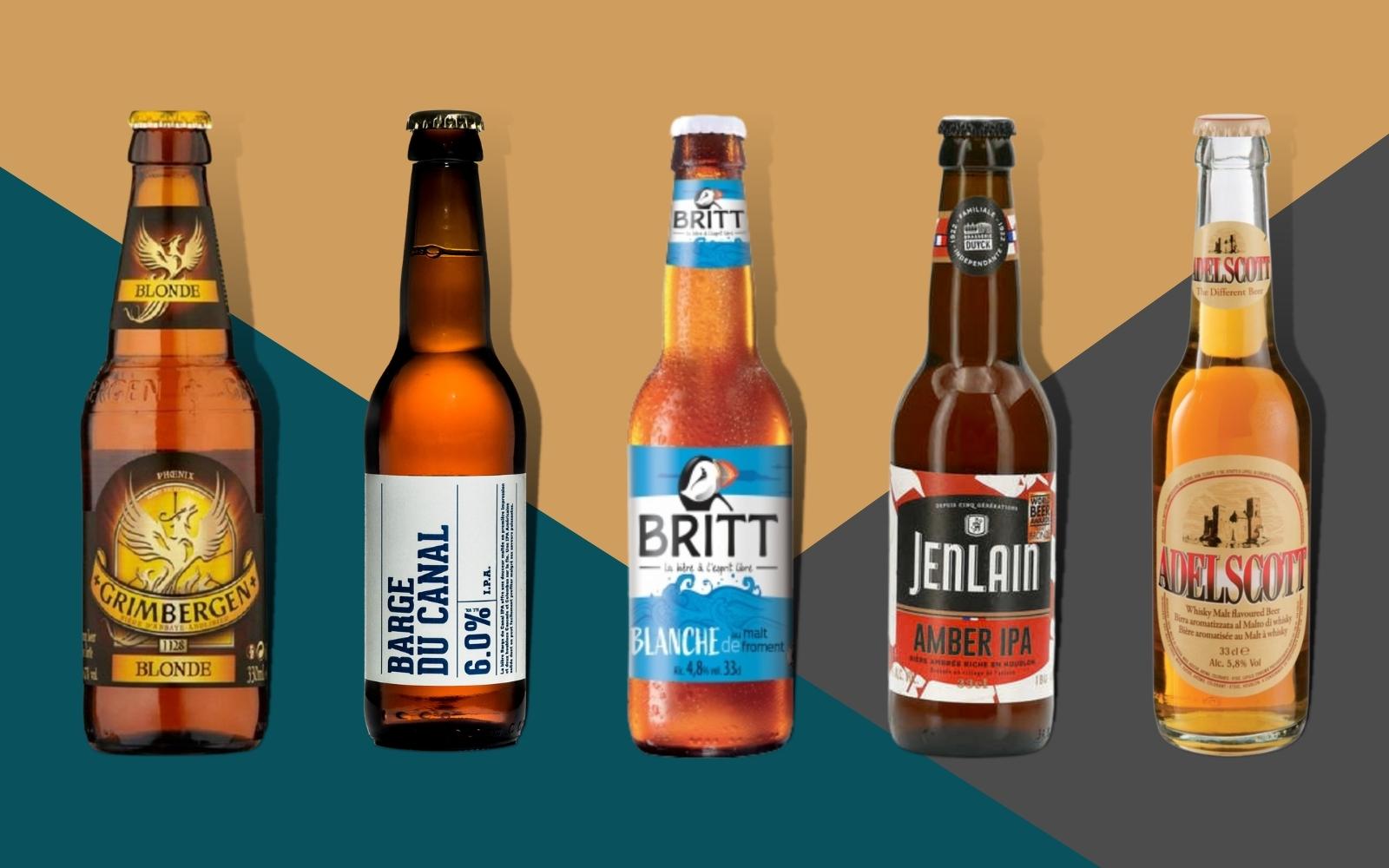France is famous for its wine, culture, and food — but what about beer?
French wine is widely regarded as some of the best in the world, but if we’re honest, French beer doesn’t quite have the same reputation. In fact, much of it is seen as mass-produced, flavorless, bland, cheap beer. Is decent beer even popular in cosmopolitan cities like Paris?
Unfortunately, nearly 90% of French beer production is controlled by major conglomerates like Heineken or 1664, but the other 10% does offer hope.
Although France will never be a major European beer producer such as Germany or Belgium, let’s take a look at how the French beer market got to where it is and some of the more interesting French beers out there.

The History of French Beer
Beer has always been one of the staple choices when it comes to social gatherings and France is no exception to that. Although France’s beers are not as well known as Belgian beers or German lagers, they still have a valid contribution to make to the world beer lovers scene.
Originally brewed by the monks in monasteries, the monks introduced hops to beers around the year 1000 AD, which helped lengthen the shelf life of the beer while adding extra flavors and bitterness.
The Northern region of France is better known for its hop varieties rather than the cultivation of grapes, which is why this area is known for its brewing rather than wine-making.
Between the 9th and 14th century, the emperor Charlemagne actually gave a monopoly to the monasteries to produce beer and it was at this time that the style of beer, Bière de Garde, was introduced, which is still loved by beer aficionados today.
Bière de Garde is the signature beer of the Northern France region, called by many beer enthusiasts “the greatest of French beers.”
A pale ale, it has a strong spicy malty flavor and is commonly brewed now in the Nord-Pas-de-Calais region during the winter and spring period as a farmhouse brew to be enjoyed later in the year. Brewing earlier in the year helps avoid the problems that may occur with the yeast in hotter summertimes.
After the monks’ monopoly of beer was released in the 15th century, the Paris Brewing Charter came into force in 1498, which regulated the taxation and production of ales in France. Similar to the German Purity Laws, it dictated brew masters could only use grain, water, and hops as ingredients in their beers.
Industrialization and the Closure of Many Smaller MicroBreweries
By the turn of the 20th Century, there were over 2300 breweries in France, and three-quarters of them were based in the ale-loving Northern France. It was during the time of industrialization that many brewers were introduced to modern techniques of mechanization, refrigeration, and more scientific brewing methods.
Unfortunately, many of these smaller breweries were just there to service the local community and keep each village happy and stocked with their own beers.
As the rural population dwindled and people moved to the cities, the breweries started to shut down and with them, the traditional artisanal beers of France looked like they were disappearing forever. The effects of the WWII bombing on the French countryside didn’t help either.
To replace the microbreweries came the larger urban brewers who started mass producing bland beer, including Heineken, and France’s very own Kronenbourg.
French Beers Today and the Rise of the Craft Beer Market
Fortunately, the past few decades have seen a resurgence of the artisanal beer scene just as the rest of the world has experienced a craft beer revolution.
In some of the trendier suburbs of Paris, you’re just as likely to find a craft beer cafe or craft beer shop as you are a cozy little French bistro. Craft beer is the current darling of Paris and the rest of the country seems to have followed suit in becoming craft beer enthusiasts.
Just over 20 years ago you would have struggled to find a microbrewery near Paris, but now there are dozens of craft breweries and throughout the country, there are now over 400 microbreweries to be found.
Although some are keeping alive the tradition of French artisanal ales, including the emblematic beer of Bière de Gare so loved by beer connoisseurs, other newer breweries are influenced by American beers and have many IPAs at the front of their range.
This brings us rather neatly to the most famous, most popular, and most worth-checking-out beers in France today.
The Largest Beer Brands in France
The largest beer brands in France, without a doubt, are brewed or owned by the Heineken company and Kronenbourg.
Kronenbourg
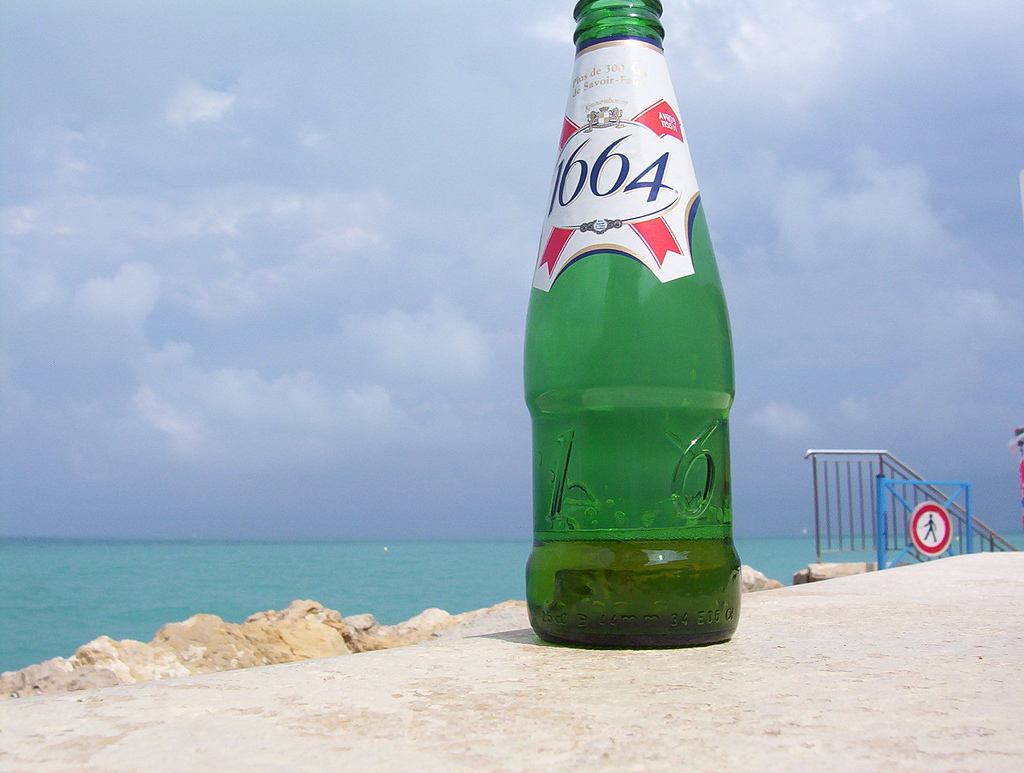
Otherwise known as the big Kro, if you want to get overly familiar. For many, this is the most famous beer in France. Originally founded in 1664 in the Alsace region, the brewery was named the Hatt Brewery after its owners.
It wasn’t until 1947 that the owner changed its name to Kronenbourg in homage to the area where the brewery was located in Cronenbourg.
For a long time, the original Kronenbourg lager had a bad reputation and was considered a cheaper bland beer for lower-class beer drinkers. However, Kronenbourg has been able to win some popularity over the years, especially with the introduction of the 1164 beer range of Kronenbourg, which comes in a variety of styles including blonde beer, gold, white beer, or even “Vintage” beer.
The original signature 1664 crisp lager variety has also seen an overhaul with a lower alcohol content of 4.2 % ABV and more hops with citrus notes for a trace of bitterness with a mellow texture and a malty-hop finish.
Desperados
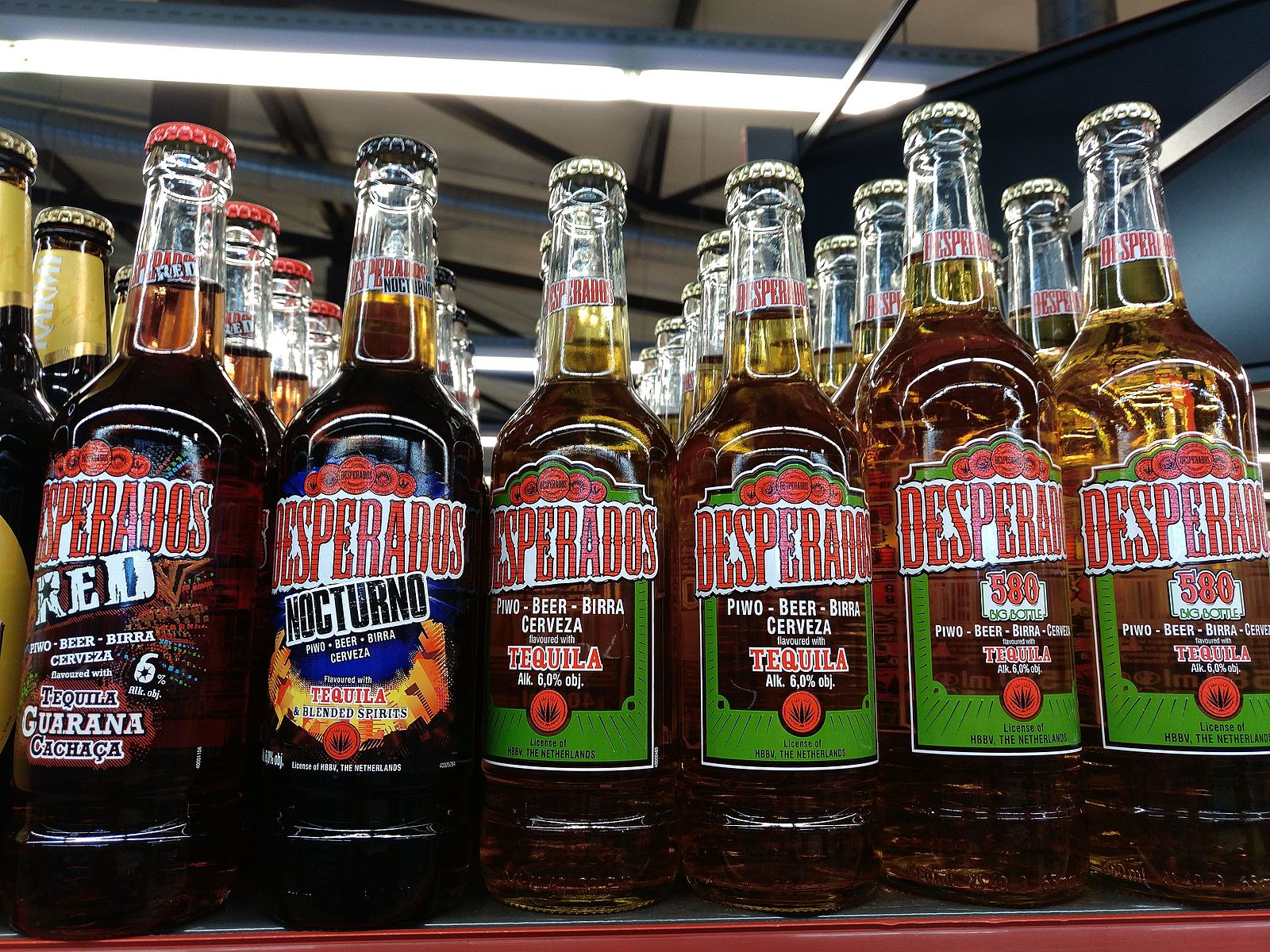
You might be surprised to learn this beer is French in origin, but it was actually born in 1995 as an Alsatian beer before being bought out by Heineken France.
Originally brewed to seduce the youth market, Desperado is considered by many to be an outsider beer, more of an alcoholic malt beverage like Smirnoff Ice and the like, instead of a full-fledged beer. The packaging and branding suggest a more upmarket drink than traditional beers like Kronenbourg.
That doesn’t mean beer drinkers can’t enjoy this drink, too. In its most basic form, it offers a clear brilliant golden-colored beer with subtle malty notes enhanced by tequila aromas for a surprisingly clean finish.
Produced worldwide since the acquisition by Heineken, Desperados now comes in a variety of flavors including guarana and cachaça, lime and cactus, mojito, Ginger, or even the Virgin without alcohol (really?).
The Grimbergen
Originally a Belgian beer, Grimbergen has been produced in France since Kronenbourg bought the rights in 1989. There were plenty of adverts for this beer shown internationally on TV stations in the early 2000s.
Seen in many of the craft beer bars in Paris, you’ll also find the French variety of Grimbergen in many international beer hangouts and restaurants. (Imagine my delight when I found Grimbergen on draught in a small restaurant in Ukraine recently!)
Although the French Grimbergen doesn’t have as many varieties of beer as its Belgian counterpart, Kronenbourg does produce 9 different assortments of flavors including a Classic Belgian-style blond beer, an “Abbey Heritage,” and even a cherry flavor “Kriek” beer.
The Classic Blond beer is a strong beer with an alcohol content of 6.7% ABV and a clear golden color with a dense creamy head. The pleasant finish combines a developed malt character with fruity aromas and subtle spices.
10 Beers You Must Try When in France
If you’re lucky enough to make it to France, there are dozens of beers that you can try, but many are also available in your local beer store franchise. Beer packs of the more popular beers are also readily available in many of the 7/11 stores across the US.
If none of the big three I mentioned above appeal to you, here are 10 of France’s favorite beers, although I have also included a couple of craft beers that may be hard to find outside of France.
Pelforth Beers
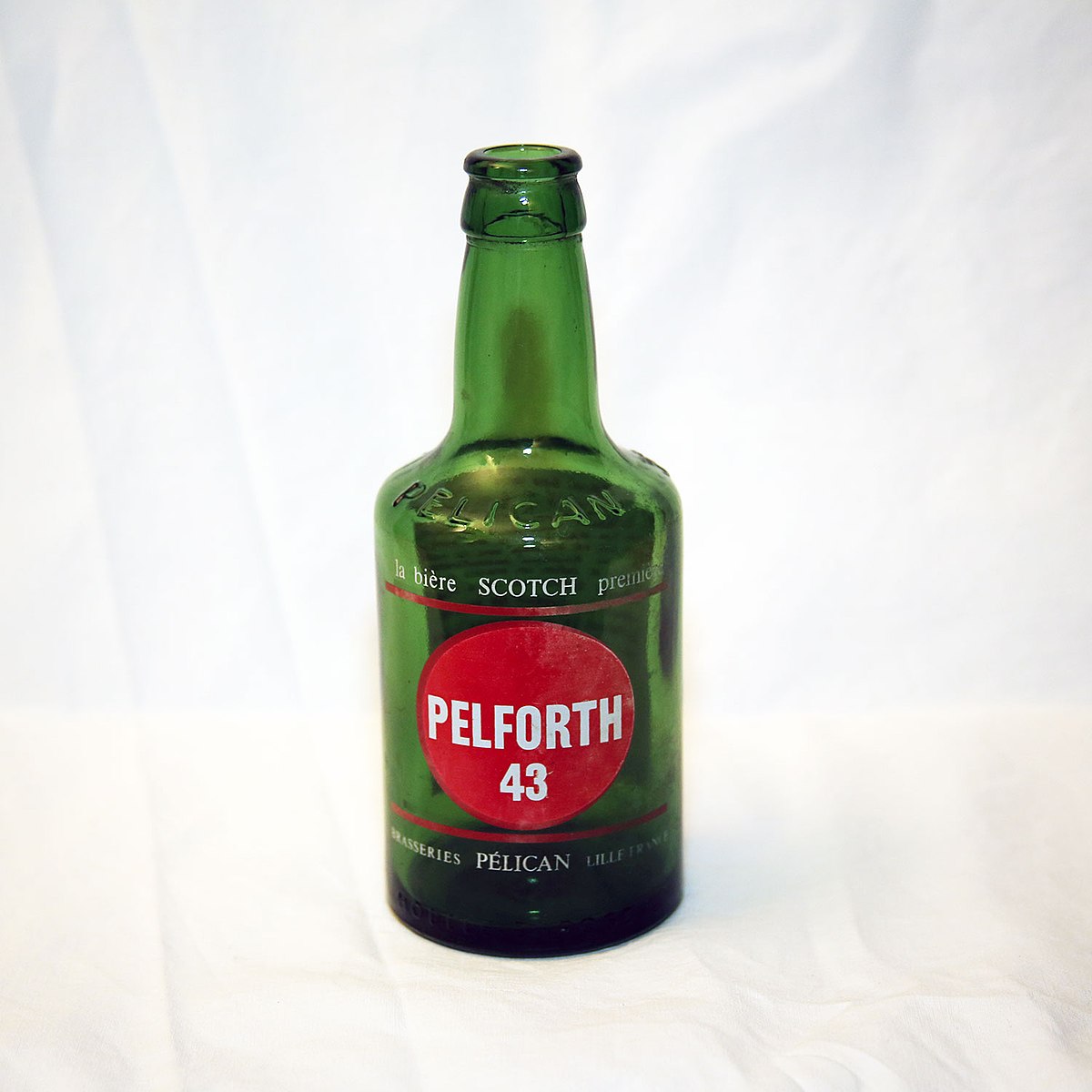
The Pelforth Brewery is one of the best-known breweries in France but was recently bought out by the Heineken company (AGAIN!). However, the Pelforth has not lost its identity and still features the iconic Pelican (“Pelforth” in French) on all its bottles.
The oldest and most well-known Pelforth variety is Pelforth Blond, although they also make a rather drinkable brown beer called Pelforth Brune.
Using a three-grain brew the Blond offers subtle tastes of coffee, caramel, and malt in a sunny yellow color beer with an ABV of 5.8%. Best served chilled between 9º C and 11º C, it has a fruity aroma with hints of almonds and is ideal to be served either before or during meals, especially with grilled meats.
Adelscott

Yet another regional family brewery that was bought out by Heineken, the Fischer Brewery in Alsace has been producing this whisky malt classical beer for many decades.
A low-fermentation beer, Adelscott is an amber beer with aromas of whiskey malt. Although it used to contain whiskey malt the label now clearly states it only features whiskey malt aroma.
Since the takeover by Heineken the taste has changed slightly, it went from a high-fermentation beer to a low-fermentation beer and the ABV dropped accordingly to 5.5%.
However, it still has a powerful taste with added maltiness yet a low bitterness in a nice amber color ale.
Bonus: the cans used for packaging this beer makes it extra easy to squeeze a few in your suitcase for the homebound journey.
Licorne Black Beer
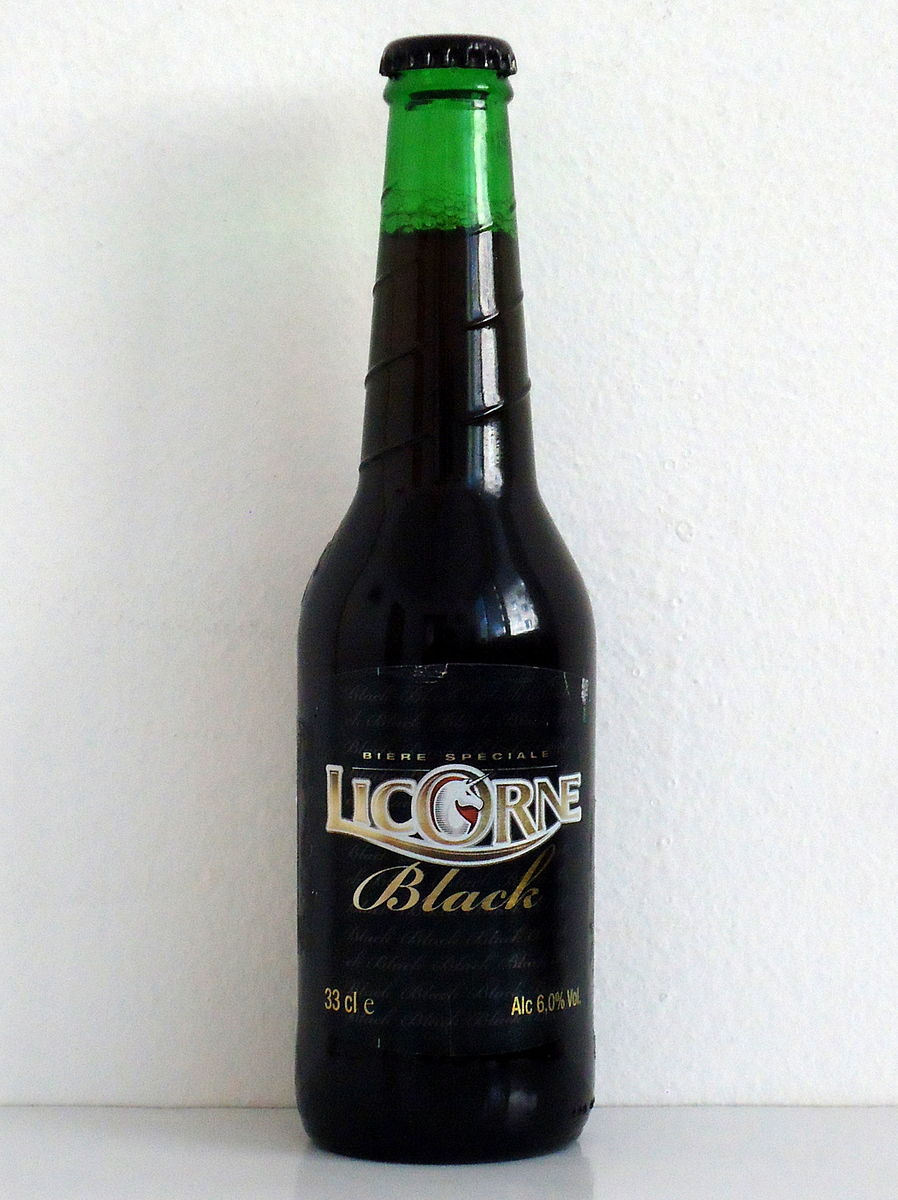
One of the more unusual beers I have featured in this list is this black beer from the Alsace region. Imagine a pint of Guinness, but add a subtle amount of smokiness and you have a Licorne Black beer with an ABV of 6%.
I say unusual as it’s not often you will find a stout or Porter in a French brewery lineup. The unique taste and black color of this exceptional beer have gained it somewhat of a cult following, especially with patrons of the Licorne Brasserie where it is brewed, one of the most famous Brasseries in the Alsace region.
Triple Grain Blonde
This beer from the Brasserie Dulion in Lille is actually a triple-style beer, heavily influenced by the age-old beer-making tradition of the Belgian brewers. First invented by Belgian monks many centuries ago, the age-old tradition has been passed down through the generations and this type of beer is popular all over France.
Normally, a heavier beer with a rich malty feel and an almost caramel taste, the Triple Grain Blonde from Lyon is actually anything but overpowering or too heavy.
At 9% that Triple Style brewing method makes it a strong beer but the use of all organic ingredients and regional products (with no malt) gives the Lyon beers a unique flavor of their own. As a bonus, some of the Dulion-produced beers are gluten-free, too.
3 Monts Beer
Hailing from the French Flanders region, the 3 Monts beer brewing company gets its name from the three mountains that surround the brewery. The brewery recently celebrated its 100th year anniversary in 2019 and is proud to still be family-owned and keep French brewing traditions alive.
The best-known beer is the 3 Monts Bière de Flandre which is one of the famous Bière de Garde beers mentioned earlier. A blond beer with high fermentation levels, it has an alcohol content of 8.5% ABV.
Best served at between 8ºC and 10ºC, the taste buds of beer enthusiasts will better detect the wheat and berries taste with a bitter licorice finish. It’s also one of the few beers produced in France which uses only barley malt, water, and hops with no added sugars.
Pietra – Biera Corsica
Pietra Corsican beer is an exceptional beer against all the odds. Corsica is a land of wines and spirits but beer previously had a very bad image on the island.
The Pietra brewery was opened by a couple from Corsica who regretted there was no Corsican beer available and it’s a culmination of their love for beer and all things Corsica.
A chestnut brown beer, Pietra Biera is a low-fermentation classical lager with a 6% alcohol content. Amber in color, the beer has a powerful taste with chestnut and cereal aromas, the chestnut tree of course being emblematic of the Isle of Corsica.
Jenlain Amber
Jenlain beers are some of the most famous in the world. Brewed in the North of France in the small village of Jenlain since 1922, these beers come from an authentic small family brewery.
This small brewery has become one of the better-known French craft beer producers worldwide due to the unique taste and recipe of their beers.
A classic yeast beer, the Jenlain yeast is used in all their beers and reused from one brew to another. Their most famous beer, the Jenlain Amber is a high-fermentation beer, which has a coppery color and features aromas of caramel and cooked fruits.
As well as those classic aromas, the beer has subtle hints of roasted malts, toasted bread, roasted almonds, hazelnuts, and tonka beans. Not as sweet tasting as you would imagine, the final taste is one of a moderately bitter beer that is generously sparkling.
Barge du Canal
A beer that can be hard to find outside Paris, Barge du Canal is an IPA from the Paname Brewing Company which features a challenging IBU of 69 to match some of the more bitter American IPAs like those produced by Stone.
Citrus and Cascade hops ensure this IPA gets just the right amount of bitterness and results in an ale that is refreshing and hoppy with just a subtle light citrus taste – my idea of a perfect IPA.
Although you may struggle to find it in bars outside of Paris, the Paname Brewing Company has an amazing microbrewery set up right on the banks of the Bassin de la Villette, which is always worth a visit. Failing that many online retailers now stock this beer and it can usually be found in specialty craft beer shops.
Britt Blanche
A white beer, Britt Blanche as the name suggests hails from Brittany in the West of France. A classic wheat beer, Britt Blanche is actually made with buckwheat malt which gives it a more distinctive unique taste.
With a lower ABV of just 4.7%, it’s an ideal “lunchtime beer” or session beer as we call them here in the States. Perfect for those afternoon picnics on the banks of the Seine.
You’ll find this beer in most supermarkets, just look out for the adorable puffin on the bottle packaging which makes it hard to miss.
Originale – Paris
The final beer to seek out in this brief top 10 is another popular Parisian beer from the Maison BAPBAP microbrewery in Paris.
One of their very first brews, Originale is a simple pale ale that combines the smooth Belgian ales with a hoppier, almost spicy taste associated with American craft beers.
A steadfast favorite with Parisian beer enthusiasts, Originale is a light, yet crisp pale ale, which is neither too hoppy nor too bitter and comes in at a not-too-strong ABV of 5.9%.
French Beer – The Conclusion
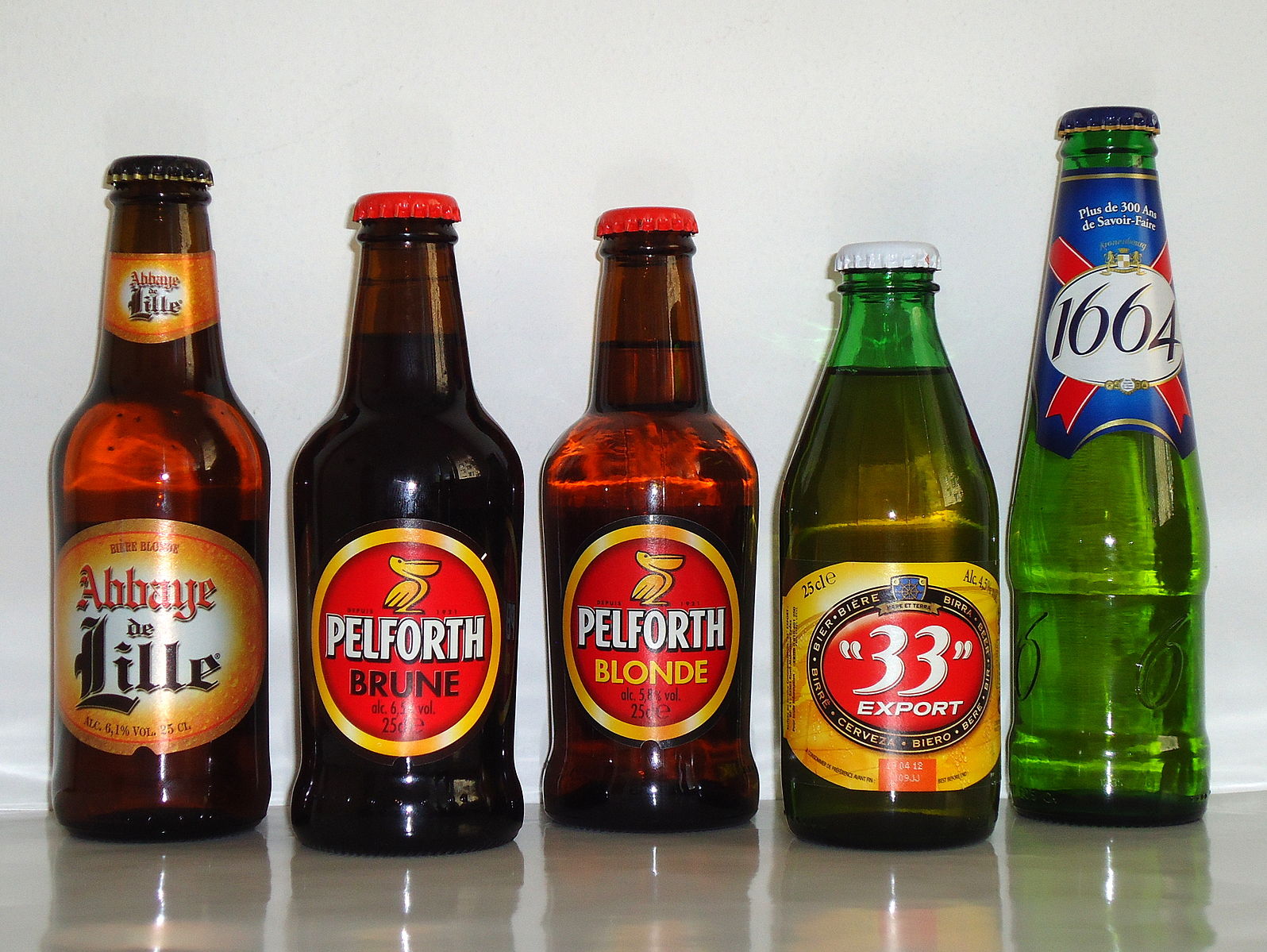
if you’re lucky enough to enjoy a trip to France soon, there’s a whole world of craft beers waiting to be discovered. Don’t just drink the odd glass of wine, but seek out the local Brasseries which may be brewing their own beers, but will certainly have a decent selection on tap.
Trendier areas like the Latin Quarter of Paris are littered with new craft beer bars and there’s even a chain called the Frog and Rosbif which blends British and French traditions with a good selection of ales.
There’s also a chain of about 20 American-style brew pubs called Les 3 Brasseurs (The Three Brewers), which operates across the country and even extends outside internationally.
Many of the beers, especially the Saison styles, the Bière de Gare, and other European-influenced French beers can be found online or at your local specialist beer depot. Don’t think French beer just starts and ends with Kronenbourg!

